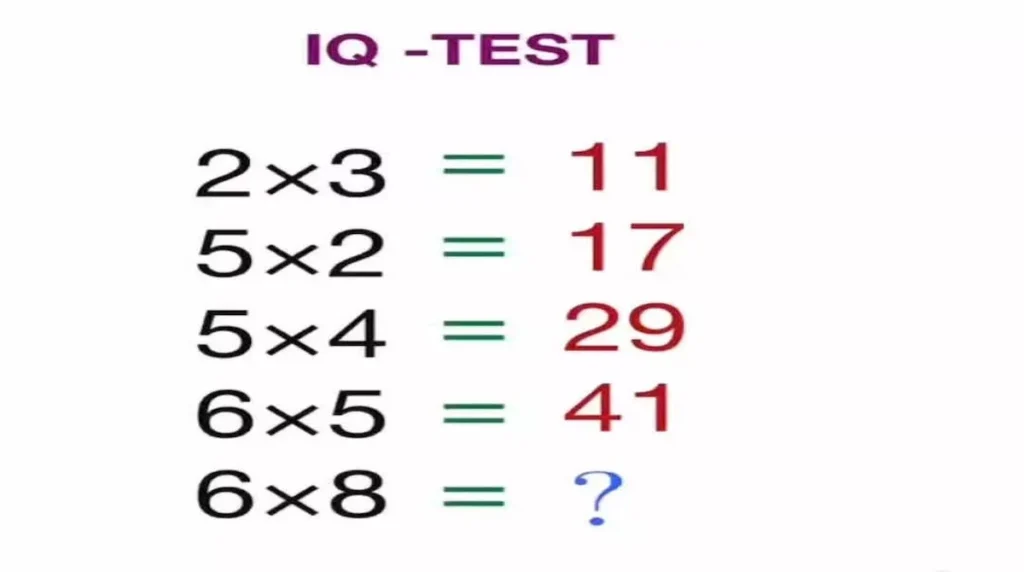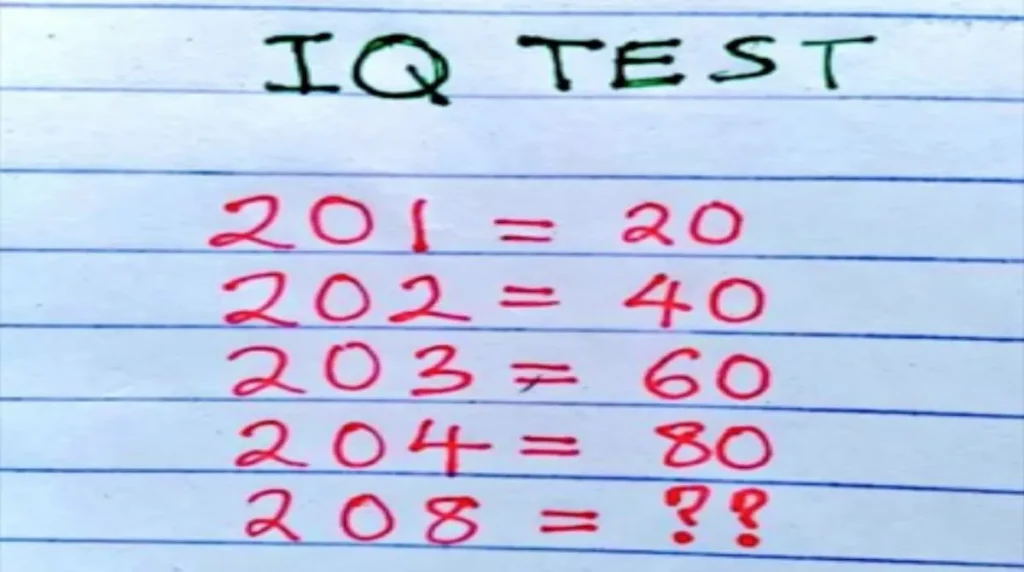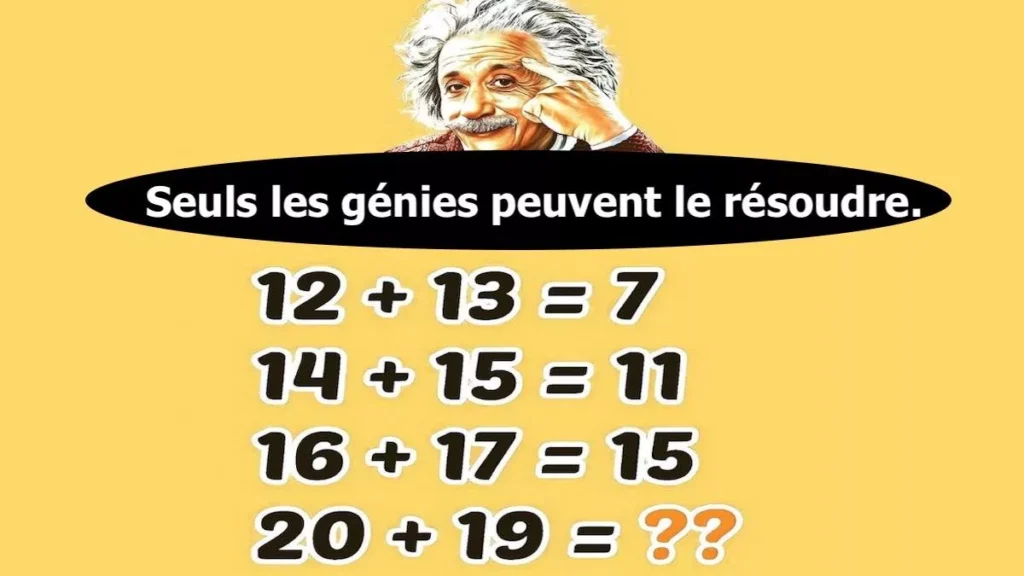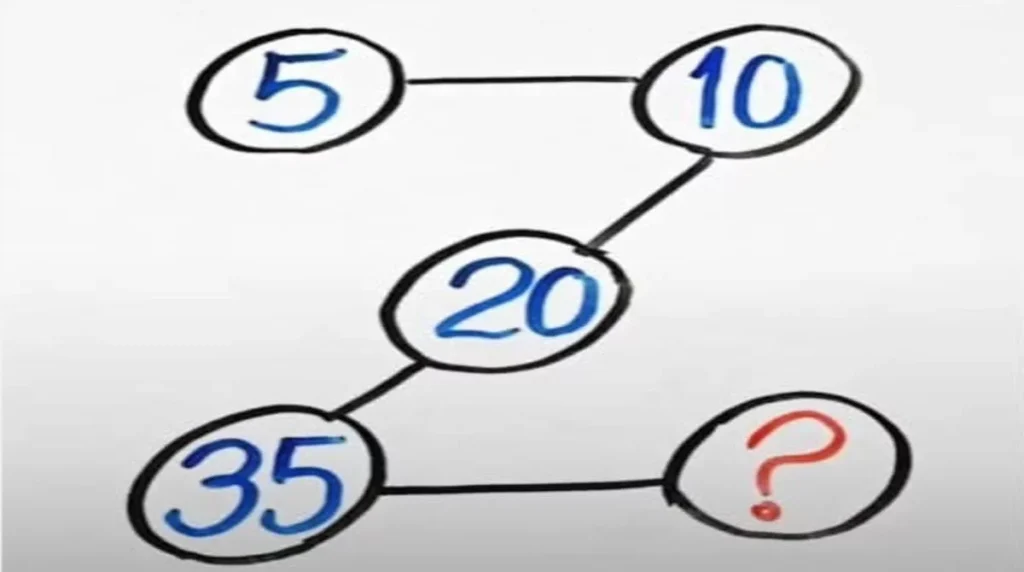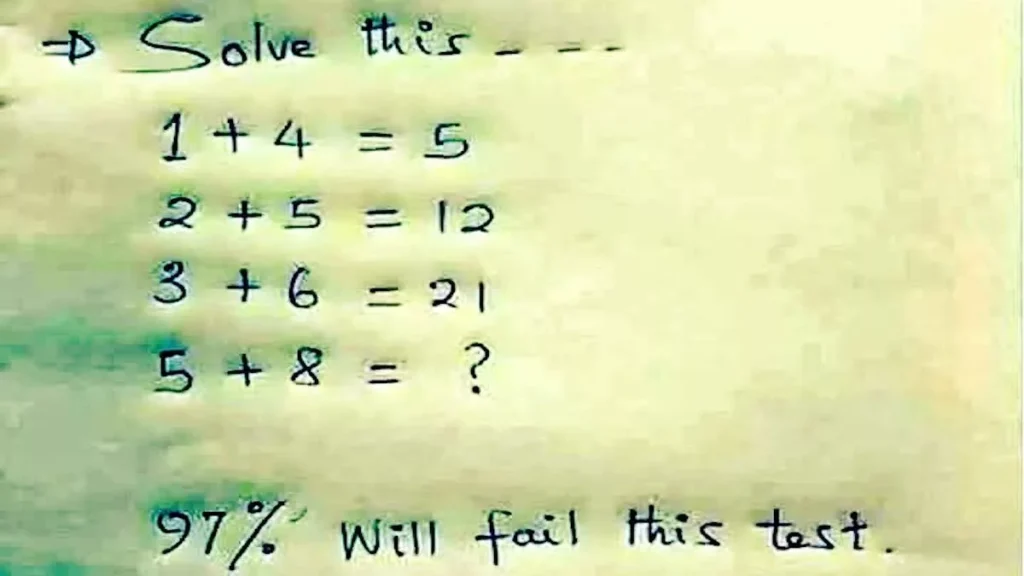A Mathematical Challenge That Leaves You Perplexed
A mathematical puzzle has recently baffled internet users with its complex pattern. Mathematics always evokes mixed reactions: while some appreciate its logical precision, others find it perplexing. However, when presented as riddles, it suddenly becomes entertaining, fascinating, and even addictive.
These challenges stimulate the mind by questioning traditional ways of thinking and encouraging the discovery of hidden patterns behind seemingly simple equations. A recent puzzle, in particular, has created a stir online.
The Mathematical Riddle That Has the Internet Buzzing
Here is the riddle in question:
“2 × 3 = 11, 5 × 2 = 17, 5 × 4 = 29, 6 × 5 = 41, 6 × 8 = ?”
At first glance, these equations seem illogical, as they do not follow standard arithmetic rules.
Many internet users have attempted to unravel the mystery behind these numbers, sparking lively debates in the comments.
This Isn’t the First Viral Math Puzzle
This isn’t the first time a challenge of this nature has piqued curiosity online.
Another puzzle also proved to be quite a challenge for users:
According to some sources, 97% of participants fail this test.
These riddles require a different approach to problem-solving, far from conventional methods of addition or multiplication.
The comment sections are filled with theories and attempts at solutions, some correct and others completely wrong.
Why Are These Puzzles So Popular Online?
Logical puzzles, especially those based on mathematics, are experiencing a meteoric rise in popularity on social media.
They provide intellectual stimulation, an exciting challenge, and a fun way to test one’s cognitive abilities.
The thrill of decoding a pattern and arriving at the correct answer delivers a unique satisfaction. Moreover, these challenges promote engagement, as participants enjoy sharing their solutions and debating potential answers.
While some believe these exercises enhance logical reasoning and problem-solving skills, others just enjoy them as an entertaining pastime.
Here Is The Solution We Found
Let’s Analyze The Sequence Of Equations:
- 2 × 3 = 11
- 5 × 2 = 17
- 5 × 4 = 29
- 6 × 5 = 41
- 6 × 8 = ?
At first glance, these equations do not follow conventional multiplication rules. Let’s look for a hidden pattern linking the numbers.
Step 1: Identify A Possible Rule
Let’s try to find a relationship between the numbers:
Taking the first case:
2 × 3 = 11
If we perform the multiplication:
2 × 3 = 6, but we have 11.
Let’s look at the difference:
11 – 6 = 5
Now, let’s do the same for the second equation:
5 × 2 = 10, yet we have 17.
17 – 10 = 7
For the third case:
5 × 4 = 20, while we have 29.
29 – 20 = 9
For the fourth case:
6 × 5 = 30, but we have 41.
41 – 30 = 11
We notice an increasing sequence of numbers: 5, 7, 9, 11
This sequence follows an arithmetic pattern, where each number increases by 2.
Step 2: Apply The Logic To The Final Equation
We have:
6 × 8 = ?
First, let’s do the standard multiplication:
6 × 8 = 48
Then, following the schema we discovered, we need to add 13 (since the sequence continues with 5, 7, 9, 11, 13).
48 + 13 = 61
Final Answer:
6 × 8 = 61
Thus, the applied rule is:
(A × B) + an increasing number (5, 7, 9, 11, 13, …)
This type of riddle demands thinking outside the conventional rules and identifying hidden patterns. Well done if you found the solution!
And remember, if you don’t want to keep having fun with tests and challenges, definitely don’t click here.

